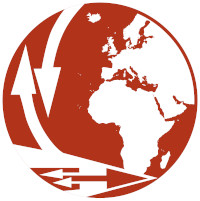Why do people leave their home countries? This has been the subject of much debate in recent years. The latest briefing paper produced by the Mixed Migration Centre (MMC), in partnership with the Rabat Process, provides a quantitative analysis of factors contributing to the departure of people on the move in West and North Africa. It sheds light on underlying migration drivers and decision-making processes and seeks to contribute to the empirical basis underpinning policy debates and decisions.
The briefing paper builds on previous work of the Rabat Process. This includes a “State of the Art” report that reviews existing works relating to the question of the “root causes” of irregular migration in the Rabat Process region, and identifies the contributions and shortcomings of the existing literature. This State of the Art helped to position and set the scene for the Rabat Process study “Social Immobility versus Social Mobility: The Root Causes of International Emigration” which was prepared for 2018 Thematic Meeting entitled “The root causes of irregular migration: Towards a common understanding and solutions”. The conclusions of this meeting and the study recognised the need to examine the factors which lead people to migrate in a comprehensive manner that fully takes account of the complexity of individual considerations. They underlined, in particular, the key role that extended family and neighbourhood relations play.
This briefing paper is the second in a series of four papers that MMC will produce in partnership with the Rabat Process in the course of 2021.
Methodology: A holistic, migrant-centred approach
Based on 2,083 surveys carried out with refugees and migrants surveyed in West and North Africa as part of MMC’s 4Mi project, the briefing paper contributes to a holistic migrant-centred approach by examining a variety of elements that factor into migration decision-making. It does so by revisiting recent debates on migration decision-making and follows with an analysis of quantitative data looking at:
- Reasons why people left their country of departure;
- Influences on their decision to migrate;
- Perceptions of possible alternatives to migration.
Key findings: Migration decision-making is a complex, multi-faceted process
The 4Mi data analysed in this paper illustrates how migration drivers can interact with each other, and that it is relatively uncommon to find one single, clear-cut reason for migration. While recognising the prominence of economic considerations, the paper highlights and analyses a variety of drivers and influences that play into a migration decision.

The paper shows that despite some broad trends that seem to supersede personal characteristics or location of origin, there is also diversity of experience and circumstance that need to be captured. This underscores the importance of going to the source – the migrants and refugees themselves.






